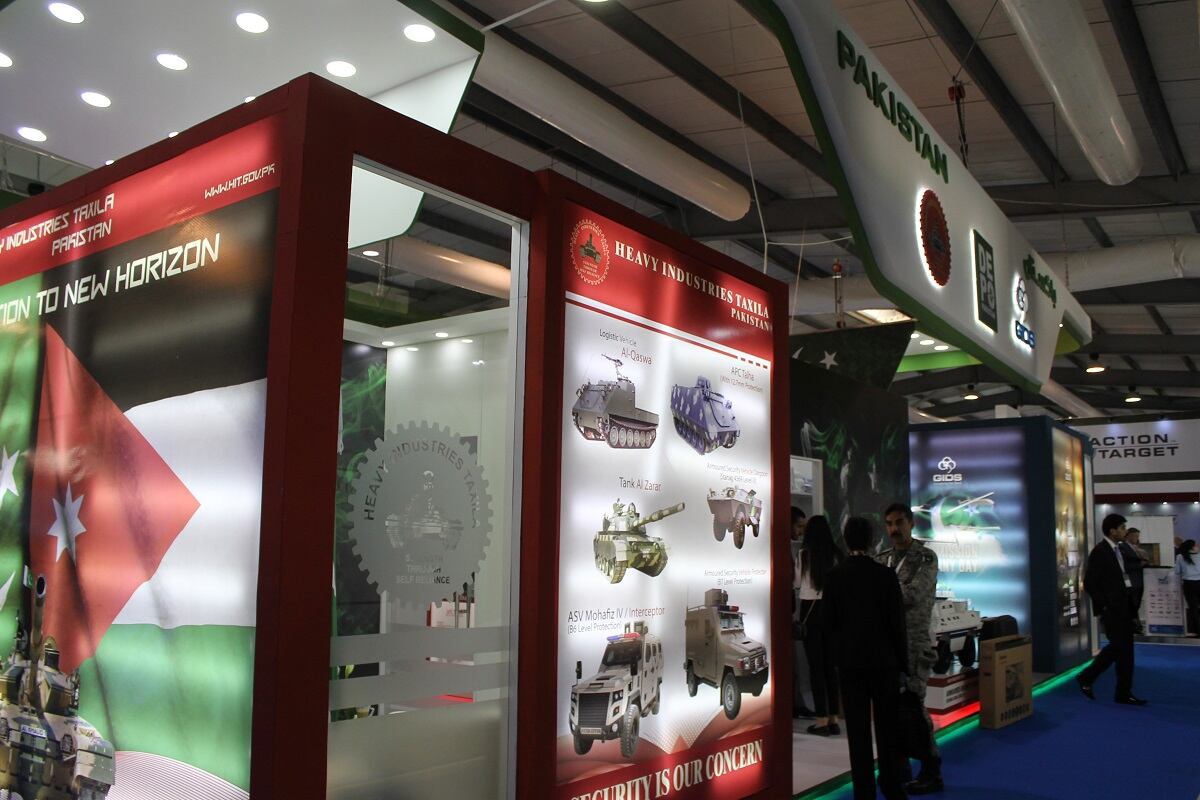ISLAMABAD — Pakistan on Tuesday carried out a successful test of its latest Ra’ad-II air-launched cruise missile, with a new range of 600 kilometers.
According to the military’s ISPR media branch, the homegrown Ra’ad-II “significantly enhances air delivered strategic standoff capability on land and at sea." The weapon features enhanced guidance and navigation systems, “ensuring engagement of targets with high precision.”
When first unveiled as a mock-up in 2017 during an annual parade in Pakistan, the Ra’ad-II had a stated range of 550 kilometers. Slight changes to the intake design led to speculation that the extra range has been achieved due to a more advanced engine than that used in the Ra’ad-I, which has a range of 350 kilometers.
RELATED

That speculation may have been correct. Though the footage from Tuesday’s test was deliberately low resolution, the rear of the Ra’ad-II appears to have been entirely redesigned with a new intake and control surfaces.
The Ra’ad-I had what may be described a large “twin tail,” whereas the Ra’ad-II appears to have adopted a more compact "X" configuration layout common with similar missiles in service elsewhere. That change should aid in its carriage on a wider range of platforms, perhaps even internally if Pakistan’s fifth-generation fighter program, Project Azm, bears fruit and features an internal weapons bay.
To date, the Ra’ad missiles have only been seen carried by Mirage III strike fighters, which have a wide-track undercarriage.
The range increase would allow the missile to launch well within Pakistan’s territory while being able to hit critical targets within India — New Delhi is roughly 430 kilometers from Lahore, for instance. That need has taken on a greater importance due to India’s air defense modernization efforts through the acquisition of systems such as the Russian S-400.
Washington also recently cleared the Integrated Air Defense System for sale to India.
Author, analyst, and former Pakistan Air Force pilot Kaiser Tufail believes the “treetop-hugging [air-launched cruise missile] with its minuscule radar cross-section should be a good antidote to the S-400.”
The redesigned rear should also aid in replacing the aging Mirage as the Air Force’s primary strike platform as more JF-17s become available, he added. “Integration of the Ra’ad on the JF-17 should be no problem, and a launch by this fighter is just a matter of time.”
Mansoor Ahmed, a senior fellow at the Center for International Strategic Studies in Islamabad who specializes in Pakistan’s nuclear program and its delivery platforms, believes the Ra’ad-II is “Pakistan’s answer to India’s development of the Nirbhay cruise missile.”
He believes Ra’ad-II “will significantly enhance the operational and targeting flexibility of the air leg of Pakistan's strategic forces.”
“It gives enhanced capability for precision strikes against critical military targets on land and at sea from safer standoff ranges. With its extended range, hitherto invulnerable sites, forces and assets can now be taken out with greater precision that were previously only covered by Pakistan’s ballistic missiles," he said.
Usman Ansari is the Pakistan correspondent for Defense News.








